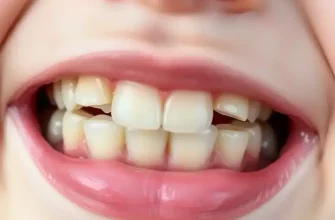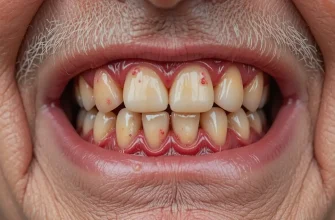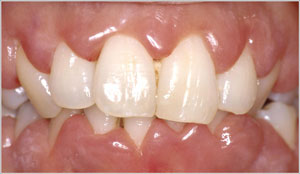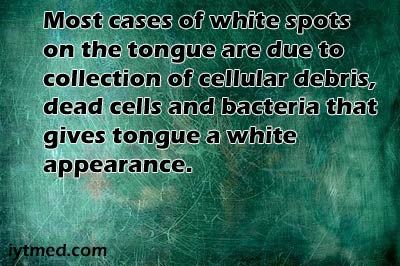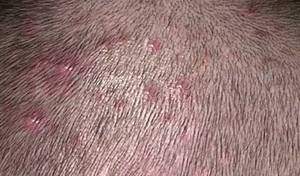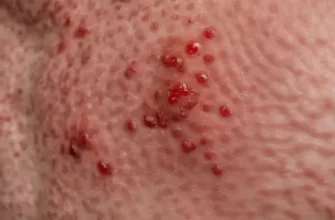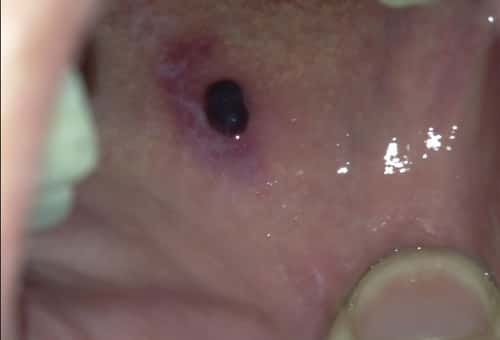Noticing black bumps on your tongue can be alarming, but the good news is that most cases are harmless. These bumps can result from various causes, including harmless pigmentation changes, infections, or even underlying health conditions that require medical attention. Understanding the causes, modern diagnostic techniques, and advanced treatment options is essential for managing this condition effectively.
Prevalence of Black Bumps on Tongue by Age Group
This chart illustrates the prevalence of black bumps on the tongue across different age groups. The data suggests an increasing trend with age, peaking in individuals 60 years and older.
Common Causes of Black Bumps on the Tongue
- Black Hairy Tongue (BHT) A benign condition caused by the overgrowth of keratin on the tongue’s surface, often due to poor oral hygiene, smoking, or antibiotic use. This condition gives the tongue a dark, hairy appearance due to elongated filiform papillae.
- Danger Level: Low – mostly cosmetic, but can indicate poor oral hygiene.
- What to Watch For: Black, brown, or dark green discoloration, bad breath, and a hairy texture.
- Case Example: A 45-year-old man from Texas noticed a dark coating on his tongue after prolonged antibiotic use. Improved oral hygiene and a tongue scraper resolved the condition in two weeks. – A benign condition caused by the overgrowth of keratin, often due to poor oral hygiene, smoking, or antibiotic use.
- Hyperpigmentation A condition where excess melanin production leads to dark patches or spots on the tongue. This can be genetic, related to hormonal changes, or due to certain medications.
- Danger Level: Low – usually harmless unless sudden changes occur.
- What to Watch For: Dark spots or patches that remain unchanged over time.
- Case Example: A 30-year-old woman from California had dark spots on her tongue since childhood. A dermatoscopy confirmed benign pigmentation. – Some individuals naturally develop dark spots or patches due to excess melanin production.
- Fungal Infections Oral candidiasis (thrush) is a common fungal infection that can cause white or darkened patches on the tongue. It often affects individuals with weakened immune systems, diabetes, or those using inhaled corticosteroids.
- Danger Level: Moderate – can cause discomfort and spread if untreated.
- What to Watch For: White patches that can be scraped off, burning sensation, difficulty eating.
- Case Example: A 60-year-old diabetic man in New York developed oral thrush after taking steroids. Antifungal treatment cleared it within a week. – Conditions like oral candidiasis (thrush) can sometimes cause darkened patches or bumps.
- Trauma or Irritation Physical injuries such as biting the tongue, burns from hot food, or friction from dental appliances can cause temporary darkened healing lesions or bumps.
- Danger Level: Low to Moderate – depends on severity and frequency.
- What to Watch For: Painful dark spots, swelling, or ulcers after biting or eating hot food.
- Case Example: A teenager from Florida bit his tongue while playing sports, causing a dark bump that healed within ten days. – Biting, burns from hot food, or rough dental appliances can cause darkened healing lesions.
- Oral Cancer A serious condition where malignant cells develop on the tongue, often linked to tobacco and alcohol use or HPV infection. Early detection is critical for successful treatment.
- Danger Level: High – early detection is crucial.
- What to Watch For: Dark, irregular bumps, rapid growth, bleeding, numbness.
- Case Example: A 55-year-old smoker from Chicago noticed a persistent dark lesion. A biopsy confirmed early-stage cancer, and treatment was successful. – Though rare, malignant growths can appear as dark, irregular bumps on the tongue.
Annual Cases of Oral Cancer by Country (2023)
| Country | Cases |
|---|---|
| USA | 54,000 |
| UK | 8,300 |
| Canada | 5,400 |
| Germany | 15,600 |
| Australia | 4,800 |
This chart provides a visual representation of the annual cases of oral cancer across various countries in 2023, highlighting the significantly higher prevalence in the USA compared to other nations.
- Blood Blisters (Angina Bullosa Hemorrhagica) These are spontaneous blood-filled blisters that appear on the tongue due to minor trauma, medical conditions, or medication side effects. They typically burst and heal quickly.
- Danger Level: Low – usually harmless but can be painful.
- What to Watch For: Sudden dark red or black blisters that burst and heal quickly.
- Case Example: A 50-year-old woman from Arizona developed spontaneous blood blisters, which resolved without treatment in a few days. – These occur due to minor trauma or certain medical conditions.
- Allergic Reactions Some individuals may develop dark bumps due to allergic reactions to foods, medications, or oral care products. These reactions can cause localized swelling and pigmentation changes.
- Danger Level: Moderate – can indicate food or medication allergies.
- What to Watch For: Swelling, burning, darkened bumps after exposure to allergens.
- Case Example: A 28-year-old man in Seattle developed dark bumps after switching toothpaste. Changing back to his old brand resolved the issue. – Some foods, medications, or oral care products can cause localized reactions, leading to dark bumps.
- Viral Infections Certain viruses, such as HPV, can cause dark or pigmented lesions on the tongue. These lesions may persist and sometimes require medical intervention.
- Danger Level: Moderate to High – depends on the virus.
- What to Watch For: Persistent dark lesions, pain, warts, or sores.
- Case Example: A 35-year-old woman in Nevada was diagnosed with an HPV-related lesion. Laser therapy effectively removed it. – HPV-related lesions can sometimes appear dark or pigmented.
Modern Diagnostic Techniques
Thanks to advancements in medical technology, diagnosing black bumps on the tongue has become more accurate and efficient. Here are some modern approaches:
1. Digital Oral Scanners & Imaging
- These high-resolution scanners and digital cameras capture detailed images of the tongue, allowing doctors to detect abnormalities quickly.
- Effectiveness: Highly accurate for identifying surface-level irregularities and changes in texture.
- Cost: $50-$300 per scan, depending on the provider.
- Availability: Commonly available at dental clinics and specialized oral health centers.
- Procedure Time: Takes about 5-10 minutes with immediate results. High-resolution intraoral scanners and digital photography allow dentists and doctors to get a clear, magnified view of tongue abnormalities.
2. Dermatoscopy for Pigmentation Analysis
- A dermatoscope is a specialized magnifying tool that helps distinguish between benign pigmentation and more serious conditions like melanoma.
- Effectiveness: Very effective in identifying abnormal pigmentation patterns.
- Cost: $100-$400 per session.
- Availability: Widely available in dermatology and oral pathology clinics.
- Procedure Time: Takes 10-15 minutes, with results reviewed by a specialist. Dermatoscopes help differentiate benign hyperpigmentation from more concerning lesions like melanoma.
3. Optical Biopsy (VELscope & Identafi)
- Uses fluorescence technology to highlight abnormal tissue, allowing early detection of precancerous or cancerous cells.
- Effectiveness: High accuracy in detecting early-stage oral cancer and tissue changes.
- Cost: $150-$500 per screening.
- Availability: Found in specialized dental and oncology clinics.
- Procedure Time: Takes about 2-5 minutes, with immediate visual results. These advanced light-based diagnostic tools help detect precancerous or cancerous lesions by identifying tissue fluorescence patterns.
4. Saliva and Microbiome Testing
- A sample of saliva is analyzed to detect bacterial or fungal overgrowth, which can contribute to tongue discoloration.
- Effectiveness: Useful for diagnosing infections and microbiome imbalances.
- Cost: $100-$300 per test.
- Availability: Available through specialized laboratories and some dental clinics.
- Procedure Time: Takes a few minutes to collect, with lab results ready in 1-3 days. Analyzing saliva samples can detect infections, bacterial imbalances, or fungal overgrowth contributing to black bumps.
5. Tissue Biopsy and Genetic Testing
- A small tissue sample is taken from the affected area for laboratory analysis, sometimes including genetic screening for cancer markers.
- Effectiveness: The gold standard for diagnosing malignancies and serious conditions.
- Cost: $300-$1,500 depending on the complexity of the test.
- Availability: Performed in hospitals, oncology centers, and pathology labs.
- Procedure Time: Biopsy takes 10-20 minutes, with lab results available in 3-7 days. For persistent or suspicious lesions, a biopsy combined with molecular testing can confirm or rule out malignancies.
Modern Treatment Options
The treatment for black bumps on the tongue depends on the underlying cause. Here’s a breakdown of some of the most effective and up-to-date treatments available:
1. Professional Cleaning & Oral Hygiene Improvement
- Regular tongue scraping and improved brushing techniques can resolve Black Hairy Tongue by removing excess keratin buildup.
- Antimicrobial mouthwashes can help balance the oral microbiome and reduce bacterial overgrowth.
- Effectiveness: Highly effective for Black Hairy Tongue and minor bacterial imbalances.
- Cost: $10-$50 for over-the-counter solutions, up to $200 for professional cleaning.
- Expected Results: Noticeable improvement within a week with consistent hygiene maintenance.
- Regular tongue scraping and improved brushing techniques can resolve Black Hairy Tongue.
- Antimicrobial mouthwashes can help balance the oral microbiome.
2. Antifungal and Antiviral Treatments
- Prescription antifungal medications like fluconazole or nystatin effectively treat oral thrush by targeting fungal overgrowth.
- Antiviral medications like acyclovir may be prescribed if HPV or another viral infection is involved.
- Effectiveness: High for infections, but requires adherence to treatment.
- Cost: $15-$150 depending on medication type and insurance coverage.
- Expected Results: Symptom relief usually within 3-7 days.
- Prescription antifungal medications like fluconazole for oral thrush.
- Antiviral medications if HPV or another viral infection is involved.
3. Laser Therapy
- CO2 or diode laser therapy precisely removes benign lesions and stimulates tissue regeneration.
- This non-invasive technique minimizes damage to surrounding tissue and speeds up healing.
- Effectiveness: Very effective for benign lesions and minor pigmentation issues.
- Cost: $300-$1,500 depending on the extent of treatment.
- Expected Results: Healing occurs within 1-2 weeks post-procedure.
- CO2 or diode laser therapy can effectively remove benign lesions and encourage tissue regeneration.
4. Cryotherapy (Cold Therapy)
- Liquid nitrogen or cryoprobe is used to freeze off pigmented lesions and viral growths.
- The frozen tissue naturally falls off within a few days.
- Effectiveness: Effective for small lesions and viral infections.
- Cost: $100-$500 per session.
- Expected Results: Full recovery within 7-14 days, depending on the treated area.
- Used to treat some pigmented lesions and viral growths by freezing them off.
5. Surgical Excision for Suspicious Growths
- A minor surgical procedure performed under local anesthesia to remove potentially malignant or bothersome growths.
- Biopsy may be performed to rule out cancerous cells.
- Effectiveness: Essential for suspicious or confirmed malignant growths.
- Cost: $500-$2,000 depending on complexity and lab tests.
- Expected Results: Recovery within 2-3 weeks, with post-surgery monitoring recommended.
- Minimally invasive surgical removal of concerning bumps, especially those suspected to be malignant.
6. Nutritional and Lifestyle Modifications
- Increasing vitamin B12 and iron intake can correct nutritional deficiencies contributing to tongue discoloration.
- Avoiding irritants like spicy foods, tobacco, and harsh oral care products helps reduce inflammation.
- Effectiveness: Preventative and supportive, especially for non-pathogenic cases.
- Cost: Varies; dietary adjustments may be low-cost, while supplements range from $10-$50.
- Expected Results: Gradual improvement over weeks to months with consistent adherence.
- Increasing vitamin B12 and iron intake can help if deficiency is a contributing factor.
- Avoiding irritants like spicy foods, tobacco, or certain oral care products can promote healing.
Effectiveness of Different Treatments
This chart presents the effectiveness of various treatments, highlighting Surgical Removal and Laser Therapy as the most effective methods.
When to See a Doctor?
If the black bumps on your tongue persist for more than two weeks, cause pain, or show signs of rapid growth, it’s time to consult a healthcare professional. Warning signs include:
- Bleeding or ulceration that does not heal within two weeks
- Persistent swelling or pain that worsens over time
- Difficulty swallowing, speaking, or moving the tongue
- Changes in color, texture, or shape of the bumps, especially if they become irregular or rough
- Presence of pus, foul odor, or a burning sensation
- Unexplained numbness or tingling in the tongue
Editorial Advice
As recommended by Reyus Mammadli, health care advisor, taking oral health seriously is crucial. Many tongue abnormalities are benign, but some require prompt medical evaluation. Staying proactive by maintaining good oral hygiene, scheduling regular dental checkups, and monitoring any persistent or unusual changes can prevent complications. If you notice black bumps that don’t go away, seek professional advice instead of self-diagnosing. Modern diagnostic tools make early detection easier, ensuring you get the best treatment possible.


